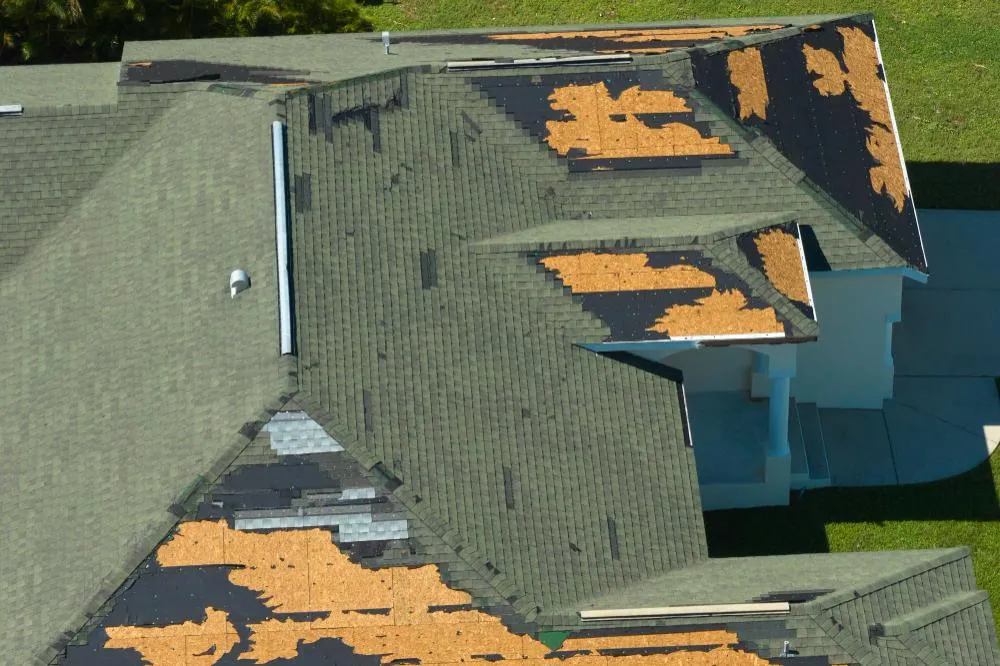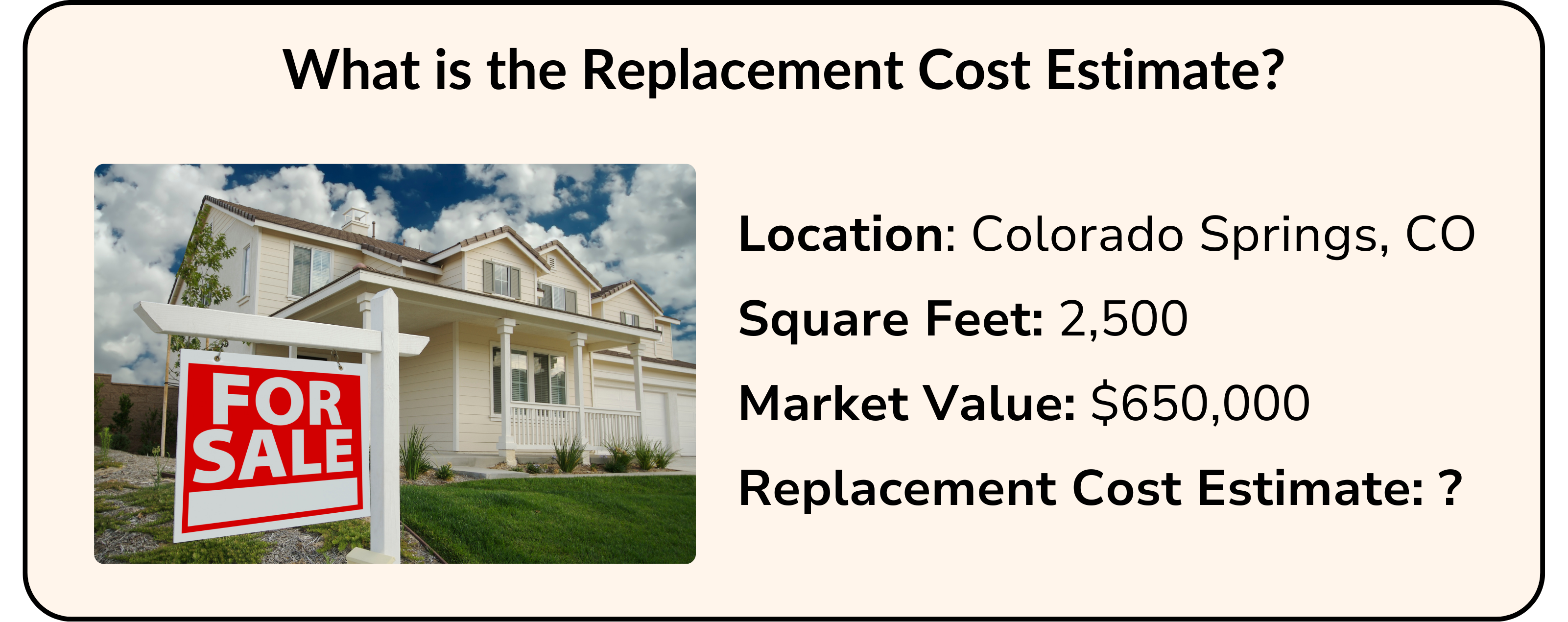
Understanding Home Insurance - Dwelling Coverage (Coverage A)
Disclaimer: The content on our blog is intended for general informational and educational purposes only and should not be considered a substitute for professional advice. Insurance needs vary widely, and because insurance companies and policies differ, readers should consult with their insurance agent for personalized guidance. While we strive for accuracy and regularly update our content, we cannot guarantee its completeness or timeliness. HonestFlow is not responsible for any actions taken on insurance policies based on the information provided on our blog.
What is Dwelling Coverage?

Coverage A, commonly known as Dwelling Coverage, is a crucial component of your home insurance policy. It covers the cost of repairing or rebuilding your home's structure if a covered peril damages it. These perils typically include fire, windstorms, hail, lightning, and other events specified in your policy. This coverage extends to the main house and any attached structures, such as an attached garage or deck.
Why is Dwelling Coverage Important?
The elements covered under dwelling coverage are often associated with high repair costs. Have you considered the cost of replacing your roof or replacing your home entirely? Homeowners without adequate dwelling coverage could face substantial expenses to complete home repairs themselves. In the following sections, we’ll discuss what is generally protected under Coverage A, explore different coverage scenarios, and highlight factors to consider when evaluating this coverage with your agent.
What's Covered Under Coverage A?

This table provides a general overview of coverage and exclusions under Coverage A (Dwelling). The specifics of your policy can vary based on your insurance carrier and individual policy details. For accurate and detailed information about your coverage, please consult with your insurance agent.
✅ Protection for Your Home's Structure
Coverage A primarily addresses the costs associated with repairing or rebuilding your home's physical structure if it's damaged by covered risks. These risks (perils) commonly include fire, lightning, windstorms, and hail, among other events explicitly listed in your policy. Note that the covered perils can vary depending on the policy type and insurance provider. Therefore, we recommend checking with your insurance agent to clarify which perils are covered under your insurance policy.
🔍 Scope of Coverage
Coverage A encompasses the primary dwelling and attached structures. This coverage typically includes various structural elements, such as the roof, walls, floors, and some permanently installed appliances. Coverage for physically attached structures can vary depending on the policy and may require separate endorsements for comprehensive protection. For example, some insurance companies require a specific endorsement to cover roofs at replacement cost. To ensure your dwelling and attached structures are fully protected, always verify the specifics of your coverage and any necessary endorsements with your insurance agent.
❌ Understanding Exclusions
Coverage A, like all insurance coverages, has limitations and exclusions. Most home insurance policies exclude damage caused by floods, earthquakes, and sinkholes. While these perils are typically excluded, some insurance companies offer additional policies or endorsements to cover these risks. Additionally, homeowners in areas prone to natural disasters (such as hurricanes, tornadoes, wildfires, etc.) may not have coverage for these events automatically included in their policy. They may require specific endorsements to cover these named perils. Homeowners need to be fully aware of the exclusions in their policy and should confirm these exclusions with their insurance agent.
Replacement Cost Estimate (RCE):

One important concept homeowners might not be aware of is the Replacement Cost Estimate (RCE). Generally speaking, this is the cost to replace your home to a "like-new" state if it were completely destroyed. The replacement cost estimate considers many characteristics of your home, including but not limited to total square footage, construction materials, and interior finishings. The replacement cost estimate is not the property's market value. The market value considers variables unrelated to actual construction costs, such as property taxes. For more information about the replacement cost estimate, view our "What Is The Replacement Cost Estimate?" article. In the next section, we'll explore three scenarios illustrating the relationship between the Replacement Cost Estimate (RCE) and Dwelling (Coverage A) limits, along with important considerations for these coverage scenarios.
Coverage A vs. RCE Scenarios

This table provides a general comparison of different Coverage A scenarios relative to the Replacement Cost Estimate (RCE). Individual policy details and coverage options can vary by insurance carrier. For specific information about your policy and to ensure adequate coverage, please consult with your insurance agent.
1️⃣ Coverage A matches the Replacement Cost Estimate
For homeowners with mortgages, lenders typically require home insurance policies to have a dwelling coverage limit that matches or exceeds the replacement cost estimate. This ensures the home insurance policy includes coverage for the estimated cost to rebuild the home in the event of a total loss. For homeowners without mortgages, insurance agents typically do not recommend having the Coverage A limit lower than the Replacement Cost Estimate due to the risk of paying significant repair costs out-of-pocket.
✅ Advantages: In this scenario, the dwelling limit is intended to cover the estimated cost of rebuilding your home, reducing out-of-pocket expenses for covered dwelling losses. This option typically satisfies lenders' minimum coverage requirements, as it aligns with the estimated cost to rebuild your home. However, it's essential to verify that the policy limits meet your lender's criteria before purchasing a policy.
❌ Disadvantages: Given that material and labor costs can fluctuate, the actual cost to rebuild a home might exceed the initial replacement cost estimate, even without structural modifications. Factors like inflation can drive up these costs. If rebuilding expenses surpass the dwelling limit, policyholders will be responsible for the excess. Therefore, it's crucial to consider potential additional rebuilding costs when determining Coverage A limits, as these extra expenses can be significant.
2️⃣ Coverage A is above the Replacement Cost Estimate
Given that material costs and labor can fluctuate, the actual cost to rebuild your home might exceed the initial estimate. Homeowners should consider potential changes to the replacement cost estimate to prevent paying repair costs out-of-pocket, if market shifts cause the rebuilding costs to rise above the Coverage A limit.
✅ Advantages: In this scenario, the dwelling coverage surpasses the replacement cost estimate, providing a buffer for increased building expenses such as higher labor costs, inflation, and supply shortages. This additional coverage can offer policyholders extra peace of mind, as it helps account for unexpected increases in home repair costs.
❌ Disadvantages: The more coverage you have, the higher the premium will be. Increasing your dwelling limit will translate to higher insurance premiums. That's why it's essential to meet with insurance agents for professional recommendations regarding Coverage A limits, to find the right balance between coverage and cost. In the next section, we'll highlight common dwelling endorsements and how they can provide additional coverage for unforeseen building expenses.
3️⃣ Coverage A is below the Replacement Cost Estimate
In some cases, a home insurance policy may allow the Coverage A limit to be less than the Replacement Cost Estimate. This scenario exposes the homeowner to significant financial risks if the rebuilding costs exceed the policy limit, such as a total loss.
✅ Advantages: This scenario generally offers lower insurance premiums compared to the previous two scenarios, as it provides the lowest amount of dwelling coverage. Although this option provides the lowest amount of coverage, some shoppers with unique insurance needs or fixed budgets may opt for this option.
❌ Disadvantages: The major downside is the increased risk of paying significant repair costs out-of-pocket. Dwelling coverage is typically associated with expensive repairs, such as repairing the roof or replacing the home entirely. If a covered peril damages a home, and repair costs exceed the Coverage A limit, the policyholder will be financially responsible for repair costs above the policy limits. It's crucial to understand your dwelling coverage limit and replacement cost estimate and to work with insurance agents to identify the best dwelling limit for your needs.
Things To Consider - Dwelling Coverage
💡 Additional Replacement Cost Coverage - Without extra coverage beyond the replacement cost estimate, homeowners may be responsible for repair costs if the replacement cost increases. Fortunately, many insurance companies offer endorsements that specifically extend the dwelling coverage limit, and these endorsements may be cost-effective compared to solely increasing the dwelling limit. Dwelling endorsements can vary with each insurance company, and HonestFlow recommends working with insurance agents to evaluate which endorsements may benefit your needs.
💡 Replacement Cost Estimate vs. Market Value - In home insurance, it's crucial to understand the difference between the replacement cost estimate and the market value of your property. Many homeowners are familiar with the market value of their property. However, the market value considers variables (e.g., property taxes) that do not influence the cost of repairing your home. It's important to be aware of these terms when evaluating Coverage A limits, as setting the Coverage A limit based on market value can lead to sub-optimal coverage. Working with insurance agents can help you understand your replacement cost estimate and explore coverage options to ensure your home's structure is adequately protected.
💡 Roof Coverage - As roof damage accounts for one of the most common home insurance claims, it's important to confirm how your policy protects your roof. In most cases, dwelling coverage (Coverage A) will include damages to the roof. However, some insurance companies may require specific endorsements to cover the roof at replacement cost. Roof claims can be costly, so it's crucial to understand whether your policy covers the roof at its replacement cost or its actual cash value, as this distinction can significantly affect the claim settlement amount. Ensure you consult with your agent to determine how your roof is protected and whether it is covered for replacement cost or actual cash value.
How much Coverage A do I need?

When deciding how much Coverage A you need, insurance agents often recommend covering the total estimated cost to rebuild your property in the event that a covered peril completely destroys your home. However, the insurance needs of homeowners can vary greatly. While some may opt for the minimum coverage, fully aware of the financial risks this entails, others may choose to secure additional coverage for greater peace of mind against unforeseen building costs. Having a detailed discussion with your insurance agent is crucial to determining the amount of Coverage A that's right for your specific insurance needs. Insurance agents typically have tools to generate replacement cost estimates, offer insights on dwelling endorsements specific to their carrier, and can help clarify the exclusions of dwelling coverage.
Solutions with HonestFlow
Given the importance and complexities of dwelling coverage, HonestFlow suggests consulting with a dedicated insurance agent. They can help evaluate your insurance needs and provide insights into the coverage options available from various carriers. HonestFlow connects insurance shoppers with verified insurance agents who can evaluate your insurance needs and recommend optimal dwelling coverage options. With HonestFlow, insurance shoppers select how many agents to receive quotes from, providing a personalized and controlled shopping experience. Furthermore, HonestFlow shoppers receive our insurance shopping tools, including our "Questions to Consider" guide, after completing their quote request. If you're in the market for home insurance or considering a change, request home insurance quotes with HonestFlow and receive our exclusive shopping tools!

Questions To Consider - Dwelling Coverage
At HonestFlow, we believe that selecting the best insurance policy goes beyond finding the lowest premium; it's about getting the right coverage for the best rate and understanding what your policy actually covers. To support our shoppers with their insurance journey, HonestFlow shoppers receive our "Questions To Consider" guide, including questions to help shoppers navigate coverage options with their agents. Here are a few questions to consider when evaluating dwelling coverage:
1. What is the Replacement Cost Estimate (RCE) for my home?
The replacement cost estimate is crucial for determining the appropriate amount of dwelling coverage to help ensure your home can be rebuilt in case of a total loss. If your dwelling coverage limit is below the RCE, you may be underinsured, which could lead to significant out-of-pocket expenses for rebuilding your home.
2. Does the Dwelling Coverage match or exceed my home's RCE?
Insurers often recommend that your dwelling coverage limit at least matches the RCE to avoid the risk of underinsurance. This alignment is particularly important if your home is damaged or destroyed, as it ensures that insurance can cover most, if not all, of the rebuilding costs. This is also a common requirement by mortgage lenders to protect their investment in your property.
3. What endorsements are available to supplement my Dwelling Coverage?
Endorsements can extend coverage beyond what a standard homeowners policy offers. For example, an Ordinance & Law endorsement can help cover costs associated with bringing your house up to current building codes during repairs, which may not be covered under standard home insurance policies. Additionally, dwelling endorsements such as “Additional Coverage A” and “Guaranteed Replacement Cost” offer expanded protection to cover increased repair costs, including those due to inflation.
4. Are there any exclusions or limitations in my Dwelling Coverage that could affect my home's rebuild?
Understanding the exclusions in your coverage can prepare you for potential out-of-pocket expenses. For instance, most standard policies do not cover earthquakes or floods, and separate policies or endorsements might be needed. Knowing these details helps in making informed decisions about additional coverages or endorsements you may need.
5. Is my roof covered at replacement cost or actual cash value?
When dwelling coverage includes replacement cost protection, the roof is generally covered at replacement cost as well. However, some insurance companies may require an endorsement to have the roof covered at replacement cost. It's crucial to verify how your roof is protected under your home insurance policy to ensure you understand the extent of your coverage.
6. How often should I review and adjust my Dwelling Coverage?
Regularly reviewing and adjusting your dwelling coverage is vital because the cost to rebuild your home can change due to factors like renovations, inflation, or changes in labor and material costs. Reviewing your replacement cost estimate at renewal or after changes to your home can help ensure your dwelling coverage remains adequate.
©️ 2024 HonestFlow LLC. All Rights Reserved

